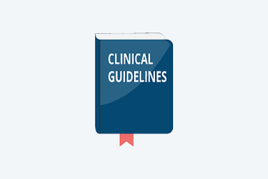Trichophyton indotineae infections and other severe or antifungal-resistant dermatophytoses

Dermatophytosis (ringworm, tinea, jock itch, athlete’s foot) is a very common and typically minor infection of the skin caused by dermatophyte fungi.1 In the past decade, severe or antifungal-resistant dermatophytoses have become a global public health concern, including in the United States.
The AAD has assembled resources on Trichophyton indotineae and other severe or antimicrobial-resistant dermatophytes. These resources include information sheets on disease recognition, diagnosis, and treatment options, but do not constitute a clinical guideline. The AAD/ILDS emerging diseases registry helps to gather information on severe or antimicrobial-resistant dermatophytosis cases.2 This content was developed by the Academy’s Emerging Diseases Task Force and Avrom S. Caplan, MD, FAAD.

Report suspected cases of antifungal-resistant dermatophytosis.

Access Academy guidance on recognizing signs of infection by T. indotineae.

See Academy information on prevention and treatment of T. indotineae.

See Academy guidance on TMVII other emerging dermatophytes of concern.

See Academy resources related to T. rubrum that is resistant to terbinafine.

Access a suggested algorithm for refractory or chronic dermatophytosis (PDF).
Alerts and brief updates
1. Notes from the Field: Trichophyton mentagrophytes Genotype VII — New York City, April–July 2024
References
Clinical Overview of Ringworm and Fungal Nail Infections. CDC. Updated 2/6/2024. Accessed 6/21/2024, https://www.cdc.gov/ringworm/hcp/clinical-overview/?CDC_AAref_Val=https://www.cdc.gov/fungal/diseases/ringworm/health-professionals.html.
Emerging Ringworm. CDC. Updated 4/24/2024. Accessed 6/21/2024, https://www.cdc.gov/ringworm/hcp/clinician-brief-resistant-infections/?CDC_AAref_Val=https://www.cdc.gov/fungal/diseases/ringworm/dermatophyte-resistance.html.
 Find a Dermatologist
Find a Dermatologist
 Member directory
Member directory
 AAD Learning Center
AAD Learning Center
 2026 AAD Annual Meeting
2026 AAD Annual Meeting
 Need coding help?
Need coding help?
 Reduce burdens
Reduce burdens
 Clinical guidelines
Clinical guidelines
 Why use AAD measures?
Why use AAD measures?
 Latest news
Latest news
 New insights
New insights
 Physician wellness
Physician wellness
 Joining or selling a practice?
Joining or selling a practice?
 Promote the specialty
Promote the specialty
 Advocacy priorities
Advocacy priorities
